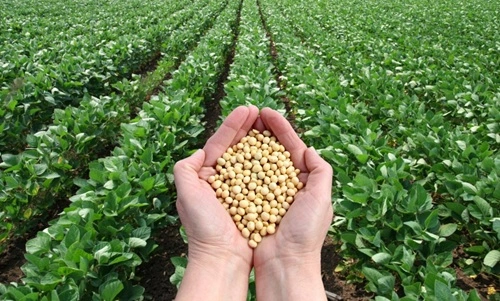Soybean is a crucial crop in India that helps in India’s economy, used as an oilseed, and much more. It supplies edible oil, animal feed, and helps farmers in diversifying their crops throughout the year for better soil fertility. Over the years, India’s soybean production has seen changes during the Kharif (Rainy, usually spanning between June and October) season.
The production of soybeans has significantly increased during the rainy season, and many states have benefited from the higher production. It not only helps as an oilseed, but there are many economic benefits to the state as well. States that outperformed in the total production are also seeing better soil fertility, which further helps with other crops.
Here, we are mentioning the top 5 highest soybean-producing states in India in 2025. The data and numbers are based on data taken from government websites, news, and credible platforms. Let’s get started –

1. Madhya Pradesh – Around 55.40 Lakh Tonnes
Madhya Pradesh is a top oilseed-producing state, and it is easy to expect MP to lead in soybean production as well. The state led with a significant margin in the 2024-25 season as the overall production was about 55.40 lakh tonnes. According to SOPA data, the state had around 52.01 lakh hectares of land under cultivation for soybean, which offered an estimated yield of around 1,065 kg per hectare. The strong performance of Madhya Pradesh comes from incentive-based schemes, new technology, and hybrid seeds.
2. Maharashtra – Around 50.17 Lakh Tonnes
Maharashtra holds the second place with around 50.17 lakh tonnes of soybean production in 2024-25. The increase in soybean output came from better incentives for farmers, an increase in market prices, and better weather. The yield was about 1,115kg per hectare, more than in Madhya Pradesh. The land under cultivation was about 45.005 lakh hectares. So, Maharashtra did better in production numbers. Also, the difference between Maharashtra and Madhya Pradesh is not very large, which makes both states close competitors.
3. Rajasthan – 10.53 Lakh Tonnes
Rajasthan comes third in soybean production with its 10.53 lakh tonnes production number in 2024-25. The area under soybean cultivation was about 11.127 lakh hectares, where the yield rate comes around 946kg/ha. Though the production yield is lower than the top two, the Rajasthan weather is a major issue in the yield rate. Overall, Rajasthan plays a crucial role in the non-central states. The dominating districts that contributed heavily to these production numbers are Kota, Jhalawar, and Baran. Rajasthan also supplies soybeans to northern states.
4. Karnataka – 4.26 Lakh Tonnes
Karnataka ranks fourth with its 4.26 lakh tonnes of soybean production. There are around 4.373 lakh hectares of land under cultivation for soybean. The per-hectare yield rate comes around 975 kg, which is slightly higher than the Rajasthan yield rate. The districts that dominate in soybean production are Belagavi and Dharwad. The soybean production in this state majorly contributes to the local edible oil industry. Due to all this, the Karnataka government is also supporting farmers with better technology, improved hybrid seeds, and incentives.
5. Gujarat – 2.95 Lakh Tonnes
A state that has always held its production numbers steady or improved in it is Gujarat. In our list, Gujarat holds fifth position with production close to 2.95 lakh tonnes. The land under cultivation was about 3.008 lakh hectares. The yield rate comes around 980 kg per hectare, which places it in third position in terms of yield rate. The cultivation area is smaller compared to the top states, but the growth rate is still impressive. The key districts that highly contributed to soybean production are Dahod, Panchmahal, and Vadodara.
Bottom Line
From Madhya Pradesh to Gujarat, these states contributed the most to the soybean production output of India. Together, these states produce about the bulk of India’s soybeans. Given the rising demand for oilseeds, the performance of these states will be important for national food and agricultural policy in 2025 and beyond. Reliable government and industry data show that improvements in farming practices, irrigation, and seed technology are helping farmers maintain stable yields. The performance of these leading states is essential for India’s food security and agricultural growth.